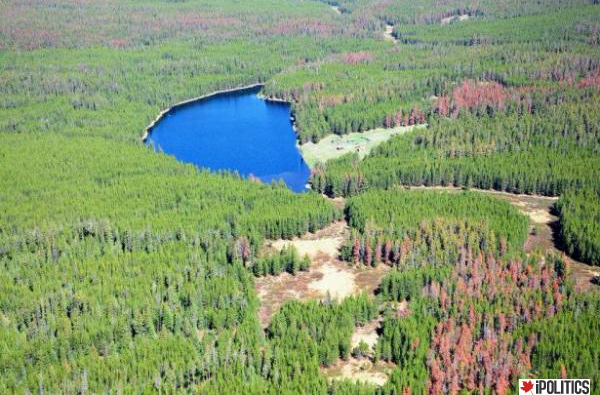A group of First Nation communities residing in the B.C. interior have successfully defended their argument that aboriginal territorial claims apply to large swathes of territory and not broken, smaller parcels at the Supreme Court of Canada today.
The Tsilhqot'in Nation, who were appealing an earlier decision at the British Columbia Court of Appeal that contradicted their view, have had their claims recognized by way of Thursday's decision in Ottawa, leaving little ambiguity about their right to the land and throwing into question the economic viability of projects overlapping with the claim.
"We're celebrating right now," said Roger William, one of the Tsilhqot'in chiefs who lead the legal fight that goes back 30 years, from the Vancouver offices of the B.C. Union of Indian Chiefs, after the decision. "Just thinking of a lot of people at home."
William, who travelled on a cross-country tour with members of the Tsilhqot'in Nation on their way to defend the case in Ottawa this past fall, described the decision as a major advancement in the questions surrounding aboriginal land title and a big step towards greater reconciliation across Canada.
"This is a win not only for First Nations across Canada, it's a win for the province and the country," he said.
The Tsilhqot'in claim is one of hundreds across Canada. Other aboriginal lands where questions of ownership are less ambiguous are governed by century-old treaties, the Indian Act, and modern land-claim agreements like the territory of Nunavut.
It's unclear what Thursday's decision means for other parts of the country where claims remain unsettled, including those along the route of the Northern Gateway pipeline project in northern British Columbia.
On its face, however, the decision was a sweeping rebuke of British Columbia's earlier attempt to have the courts recognize a narrow interpretation of aboriginal land rights spelled out by the constitution and multiple Supreme Court decisions.
Thirty years in the making
The original conflict between the Tsilhqot'in and the province lies in forestry licenses granted under B.C.'s Forest Act in the 1980s. After protests and talks failed to bring an agreement, a trial began in 2002 that attempted to determine the Tsilhqot'in's right to land also under the jurisdiction of the province's regulatory laws.
The trial, which lasted 339 days and included lengthy testimony from Tsilhqot'in elders in order for the First Nation to prove their centuries-old connection with the land, eventually determined that the Tsilhqot'in were in principle entitled to a declaration of aboriginal title to a portion of the claim, as well as an additional region.
An appeal by the province to the British Columbia Court of Appeal in 2012 reversed the title declaration. But that court said in the future the First Nation could claim smaller tracts of land. The Tsilhqot'in have often disparaged this route as giving them title to 'postage stamp-style' pieces of land.
The Supreme Court of Canada reversed that decision today by siding with the original trial judge in saying that he applied the correct test in determining whether aboriginal title could be recognized. That test has been defined by past Supreme Court decisions.
The B.C. Court of Appeal was erroneous in suggesting aboriginal title could be reduced to small tracts of land, the Supreme Court said Thursday. The fact that there was conflicting evidence in the testimony given in the original trial does not, as the province argued, "demonstrate palpable and overriding error," it said.
Additionally, the court said British Columbia had failed in its constitutional duty to consult and accommodate the Tsilhqot'in during the original forestry permit granting phase. That duty, if properly applied, allows the federal or provincial governments to justify an incursion on aboriginal land.
It will now be up to the B.C. legislature to decide whether to amend its forestry regulations with the Supreme Court decision in mind.
As for the Tsilhqot'in, William said that after the euphoria dies down there will be discussions with other First Nations about how this changes the legal landscape and the broader situation in federal-provincial-aboriginal relations.
"There's so many ideas across this country," he said. "Right now we're just celebrating." ![]()
Read more: Indigenous, Rights + Justice, Federal Politics















Tyee Commenting Guidelines
Comments that violate guidelines risk being deleted, and violations may result in a temporary or permanent user ban. Maintain the spirit of good conversation to stay in the discussion.
*Please note The Tyee is not a forum for spreading misinformation about COVID-19, denying its existence or minimizing its risk to public health.
Do:
Do not: